Social media platforms constantly evolve, making it challenging for brands to stand out and create effective social media campaigns. What’s more — developing original ideas and getting seen amidst the ever-changing algorithms can be tricky. That’s why successful social media campaign examples can serve as inspiration.
As some brands have cracked the code with social media campaigns, you can learn from them to inspire your own.
In this article, we'll show social media campaign examples and secrets to their success to inspire your next social media campaign. Let’s dive in!
What is a Social Media Campaign?
A social media campaign is a set of actions that use social media platforms to promote a specific message, product, or service.
In addition, the campaign can take many forms, such as a contest, a promotion, or a series of posts. Their main goal is often generating engagement and driving website or landing page traffic.
Brands usually launch campaigns on Facebook, Twitter, Instagram, or LinkedIn using well-suited content for these platforms’ algorithms and audiences.
The content can include text, images, videos, and other media forms designed to attract attention, educate, or persuade the audience.
What’s more — you can measure the success of a social media campaign by the level of engagement it generates, such as likes, comments, or shares.
A successful campaign can build brand awareness, increase website traffic, generate leads, and drive sales.
14 Social Media Campaign Examples
A well-executed social media campaign can capture attention, generate buzz, and even go viral. Let’s look at 14 social media campaign examples to set you up for success.
- Spotify Wrapped
- Apple’s #ShotOniPhone
- Getty: The Getty Museum Challenge
- The Ice Bucket Challenge
- Airbnb — "Live There"
- Tiktok — "It Starts on TikTok"
- Twitter — If You Dream It, Tweet It
- Bombas — "Bombas Gives Back"
- Everlane — "Know Your Factories"
- Thrive Causemetics — "Bigger Than Beauty"
- Honey Bunches of Oats — "Happy Mother's Day"
- Make-A-Wish — BatKid Campaign
- State Bicycle Co — 12 Days of State
- Blendtec: Will It Blend Campaign
1. Spotify Wrapped
Let’s kick this list of social media campaign examples off with our favorite one. Spotify Wrapped is an annual marketing campaign by Spotify, a popular music streaming platform. The campaign aims to showcase user listening behavior over the past year through personalized insights and data visualizations.
The campaign involves generating customized graphics and statistics for each user based on their listening habits, such as top songs, artists, genres, and the total amount of time spent listening to music.
The data is presented in an engaging and visually appealing way, encouraging users to share their results on social media.
The reasons behind the social media campaign's success:
- Personalization: Spotify Wrapped offers a unique personalized experience for each user, creating a sense of exclusivity and engagement with the brand.
- Social media sharing: The campaign encourages users to share their results on social media, amplifying the reach and impact of the campaign.
- Nostalgia: The campaign appeals to users' emotions by highlighting memorable moments and songs from the past year, creating a sense of nostalgia and attachment to the platform.
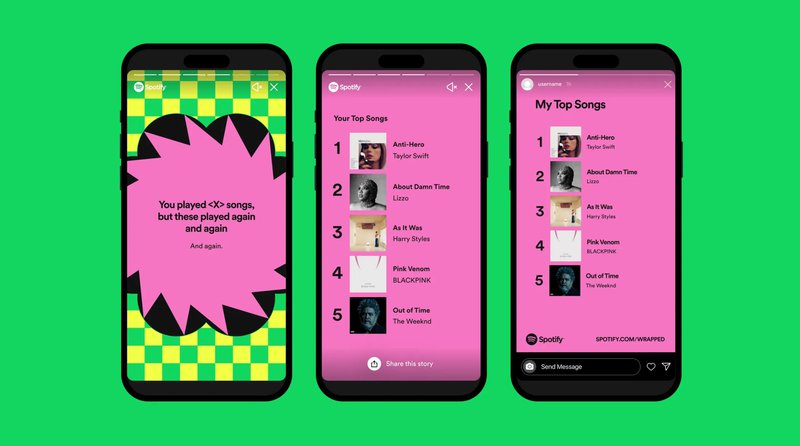
2. Apple’s #ShotOniPhone
Apple's #ShotOniPhone campaign showcases the camera capabilities of its iPhone models through user-generated content (UGC). The campaign invites iPhone users to share their photos and videos taken with their iPhone on social media using the hashtag #ShotOniPhone.
The campaign features stunning visuals and a diverse range of subjects, demonstrating the high-quality camera capabilities of the iPhone. Apple also highlights the editing capabilities of the iPhone, encouraging users to explore the various editing tools available in the Photos app.
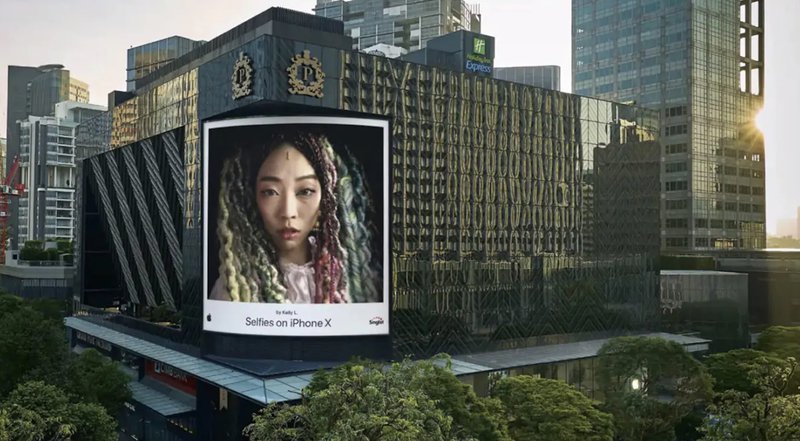
Additionally, for users concerned about their online privacy and security while sharing photos and videos on social media platforms, integrating a free VPN for iPhone can provide an extra layer of protection by encrypting their internet connection and safeguarding their data.
The reasons behind the social media campaign's success:
- User-generated content: The campaign leverages user-generated content, making it more authentic and relatable to the target audience.
- Showcasing features: The campaign effectively highlights the camera and editing capabilities of the iPhone, educating users on its unique features.
- Community building: By featuring user-generated content, the campaign fosters a sense of community and engagement among iPhone users.
3. Getty: The Getty Museum Challenge
The Getty Museum Challenge is a social media campaign by the J. Paul Getty Museum that encourages people to recreate famous works of art using everyday objects found in their homes. The campaign invites participants to share their creations on social media using the hashtag #GettyMuseumChallenge.
The initiative is a creative way of engaging with art and culture during the COVID-19 pandemic, providing a fun and educational activity for people to do at home. It also showcases the diverse range of creativity and resourcefulness among participants, making the campaign more inclusive and accessible.
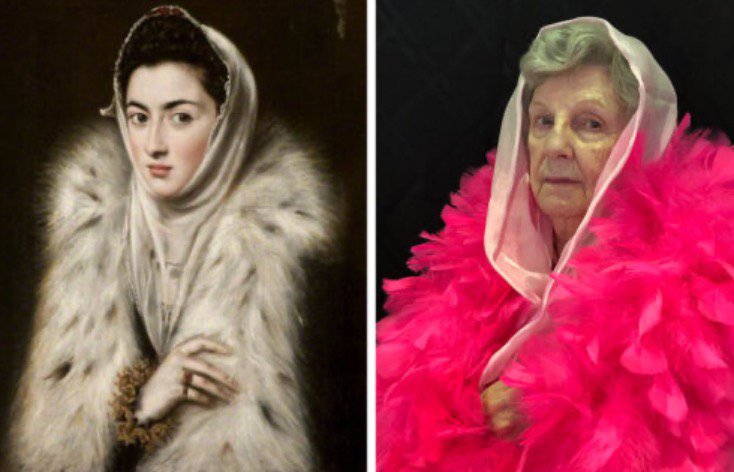
The reasons behind the social media campaign's success:
- Creativity: The campaign encourages participants to think outside the box and be creative, making it more engaging and entertaining.
- Social media sharing: The campaign relies on social media sharing, which amplifies the reach and impact of the campaign.
- Inclusivity: The campaign's open-ended approach allows for diverse participation and makes it more accessible to a wider audience.
4. The Ice Bucket Challenge
This campaign was created to raise awareness and funds for ALS (amyotrophic lateral sclerosis). The challenge involved people filming themselves pouring ice water over their heads and throwing a challenge to do the same.
The campaign got lots of shares on social media in 2014 and raised millions of dollars for ALS research.
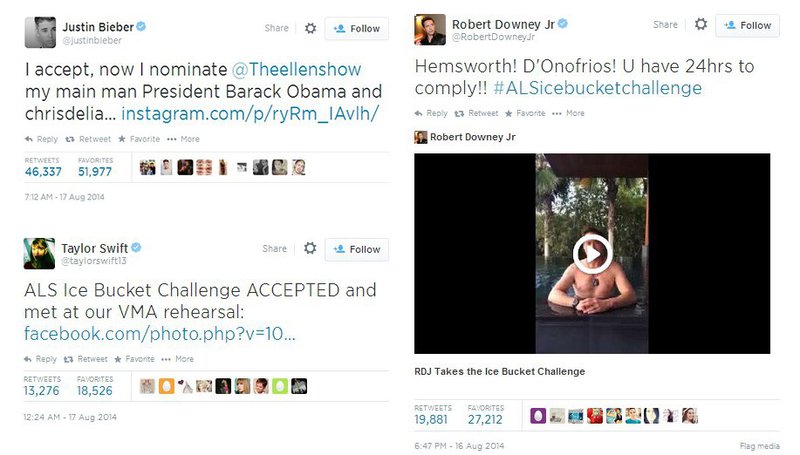
The reasons behind the social media campaign's success:
- Simplicity: The Ice Bucket Challenge was a simple and easy-to-understand campaign. Participants were challenged poor ice water over their heads and donate money to ALS research.
- Viral nature: The Ice Bucket Challenge quickly went viral on social media, with people challenging their friends to participate.
- Celebrities and influencers: Many celebrities and influencers have made Instagram shoutouts for the Ice Bucket Challenge, which helped to increase its popularity. This participation also helped to establish the campaign as a legitimate cause and raise credibility.
- Measurable impact: The Ice Bucket Challenge raised over $115 million for ALS research, which was a significant and measurable impact. This impact helped to create a sense of accomplishment and success around the campaign.
5. Airbnb — "Live There"
Airbnb's "Live There" campaign aimed to position the brand as a way to experience travel like a local. The campaign featured short videos showcasing unique local experiences in various destinations. The campaign generated millions of views and helped to reinforce Airbnb's brand message.
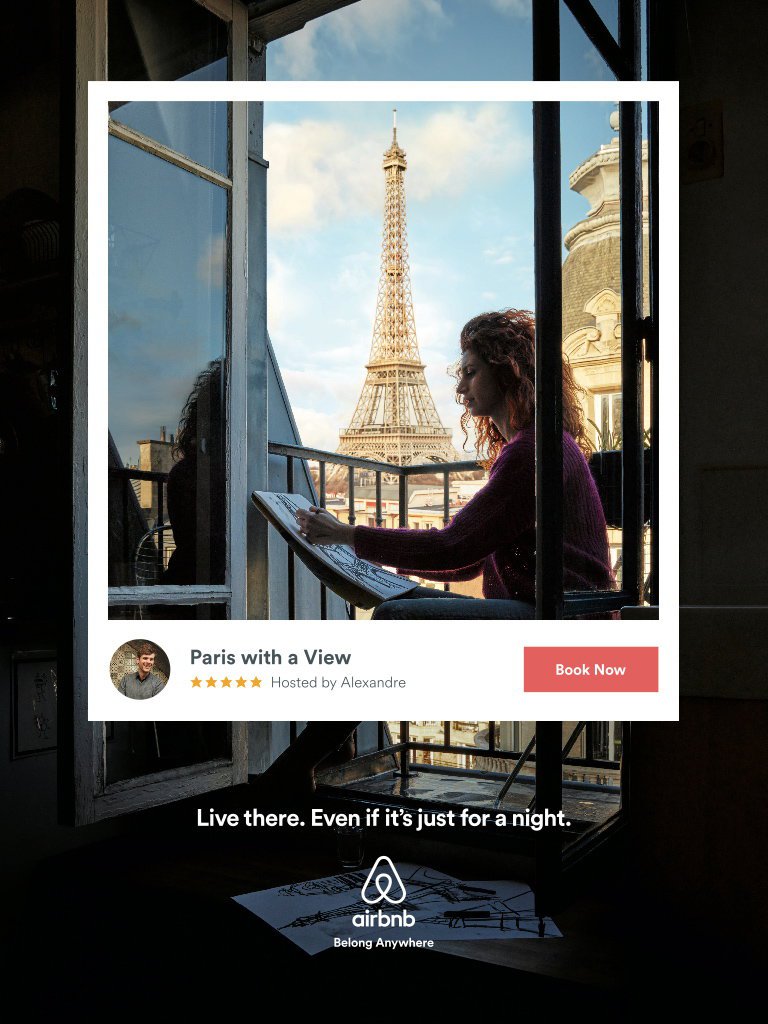
The reasons behind the social media campaign's success:
- Unique value proposition: The campaign's message, "Don't go there. Live there," positioned Airbnb as a platform that offers unique travel experiences that allow guests to live like a local.
- Emotional appeal: The campaign focused on the emotional benefits of staying in an Airbnb property, such as feeling like a local.
- User-generated content: The campaign featured user-generated content that showcased real guests' experiences staying in Airbnb properties. This approach helped build trust and credibility with potential guests considering booking a stay.
- Multi-channel marketing: The campaign was promoted through various channels, including digital ads, social media, and television commercials. This multi-channel approach helped to increase brand awareness and reach a broader audience.
- Brand identity: The "Live There" campaign reinforced Airbnb's brand identity as a platform that offers unique travel experiences.
6. Tiktok — "It Starts on TikTok"
TikTok's "It Starts on TikTok" campaign aimed to showcase its ability to create viral trends and cultural moments. The campaign included a series of videos featuring popular TikTok creators and their memorable moments on the platform. The campaign helped to reinforce TikTok's position as a leading social media platform.
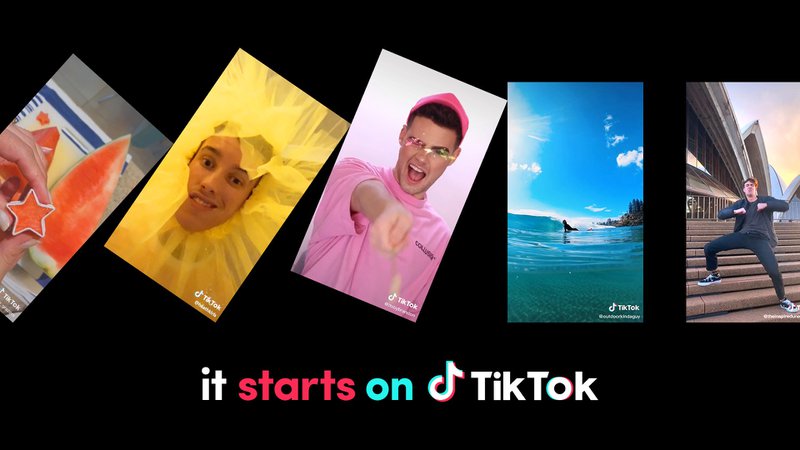
The reasons behind the social media campaign's success:
- Catchy slogan: The campaign's slogan, "It Starts on TikTok," is catchy and easy to remember, which has helped to build brand awareness and recognition.
- User-generated content: The campaign is built around user-generated content, which encourages users to create their videos and share them on the platform. This approach has helped to build engagement and create a sense of community around the brand.
- Viral content: TikTok's algorithm is designed to promote engaging and shareable content, which has helped generate viral content that has increased the platform's reach and popularity.
- Influencer marketing: TikTok has worked with influencers and creators to promote the platform and the campaign, which has helped to build credibility and trust with users.
- Platform features: TikTok's unique features, such as its short-form video format and editing tools, have helped to create a fun environment for users to express themselves and share their content.
7. Twitter — If You Dream It, Tweet It
"Twitter — If You Dream It, Tweet It" is a playful twist on the well-known phrase "If you can dream it, you can do it." It encapsulates the essence of Twitter as a platform where users can share their thoughts, ideas, dreams, and aspirations with the world in the form of tweets.
It suggests that no matter how big or small your dreams are, Twitter provides a platform for you to share them with the world, potentially connecting with others who share similar interests or aspirations. It highlights the power of social media in amplifying individual voices and ideas, ultimately contributing to a more connected and dynamic online community.
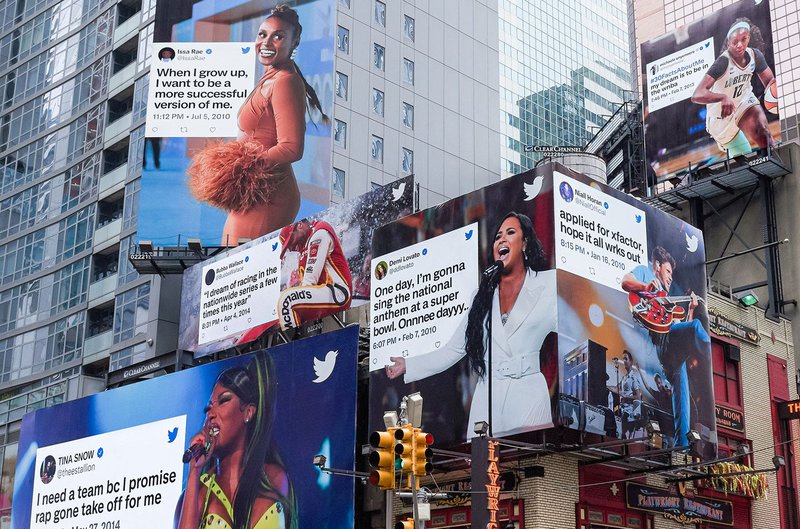
- Engaging message: The slogan "If You Dream It, Tweet It" is catchy and resonates with Twitter's user base, encouraging them to share their thoughts and aspirations.
- Emotional appeal: The campaign taps into the emotions of users by highlighting the power of dreams and the platform's ability to connect people with similar interests and goals.
- Empowerment: The campaign empowers users to express themselves freely and authentically, reinforcing Twitter's image as a platform for self-expression and individuality.
- Social sharing: The campaign's message is easily shareable across various social media platforms, amplifying its reach and increasing brand awareness for Twitter.
- Celebrity endorsements: If influential figures or celebrities participate in the campaign, it can significantly boost its visibility and credibility, attracting more users to join in.
8. Bombas — "Bombas Gives Back"
Bombas is a sock company that gives a pair of socks to a homeless person for every pair of socks purchased. Their social media campaign "Bombas Gives Back" aimed to raise awareness of their donation program and encourage customers to share their own stories of giving back. The campaign included user-generated content, such as photos of customers donating socks to homeless shelters, and generated a lot of engagement on social media.
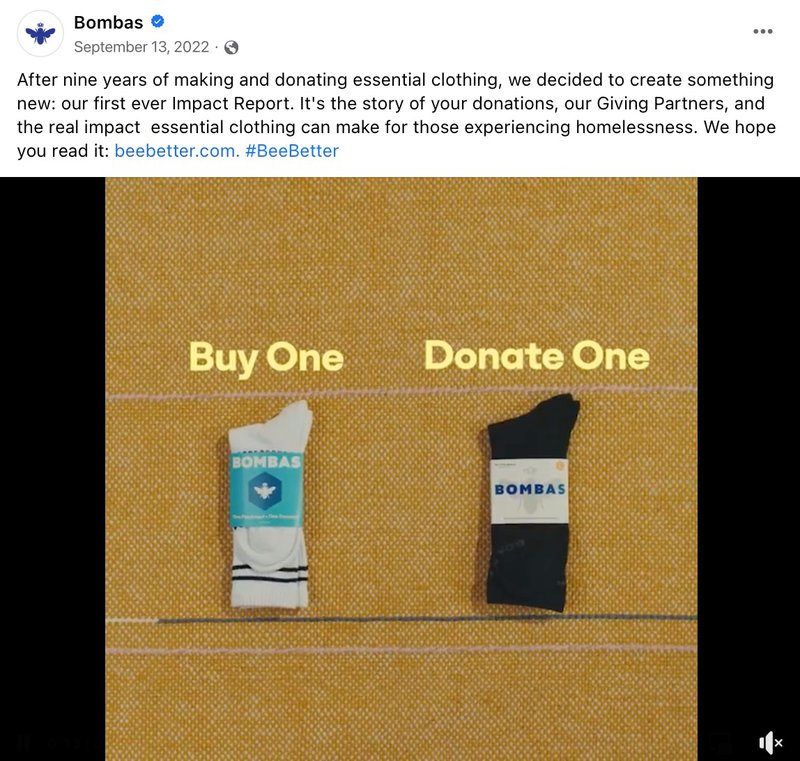
The reasons behind the social media campaign's success:
- Tangible impact: Bombas donates a pair to a homeless shelter or other community organization for every pair of socks sold. This approach has helped to build trust and loyalty with customers who appreciate the brand's commitment to social responsibility.
- Authenticity: The program was created in response to the fact that socks are the most requested item in homeless shelters, and it has been built around a clear and impactful solution to this problem.
- Brand identity: The program reinforces the brand's commitment to social responsibility, which has helped to differentiate it from other sock brands and establish a loyal customer base.
9. Everlane — "Know Your Factories"
Everlane is a sustainable clothing brand which aim is to be about its production processes and pricing. Their "Know Your Factories" campaign aimed to showcase the factories where their clothes are made and the people behind the production. The campaign included videos and photos featuring factory workers and their stories. It helped to reinforce Everlane's commitment to transparency and ethical production.
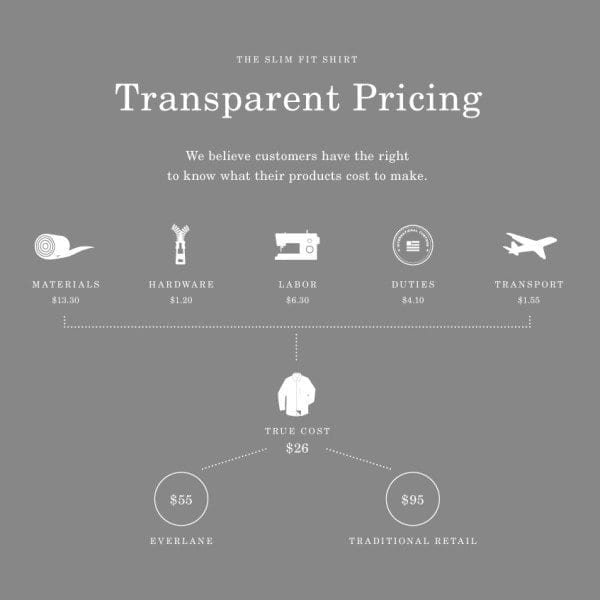
The reasons behind the social media campaign's success:
- Transparency: The campaign was built around the idea of transparency, resonating with consumers increasingly concerned about ethical and sustainable practices in the fashion industry.
- Authentic storytelling: The campaign featured factory workers and included information about their wages, working conditions, and benefits. This authentic storytelling helped to humanize the workers and provide a personal connection for consumers.
- Education: By providing information about the factories and supply chain, Everlane was able to educate consumers about the importance of ethical and sustainable practices.
10. Thrive Causemetics — "Bigger Than Beauty"
Thrive Causemetics is a beauty brand that donates some of its profits to various charities that support women. Their "Bigger Than Beauty" campaign aimed to highlight the stories of women who have overcome adversity and give back to their communities. The campaign included a series of videos featuring women from various backgrounds and their inspiring stories. The campaign helped to reinforce Thrive Causemetics' brand message of empowering women and making a positive impact.
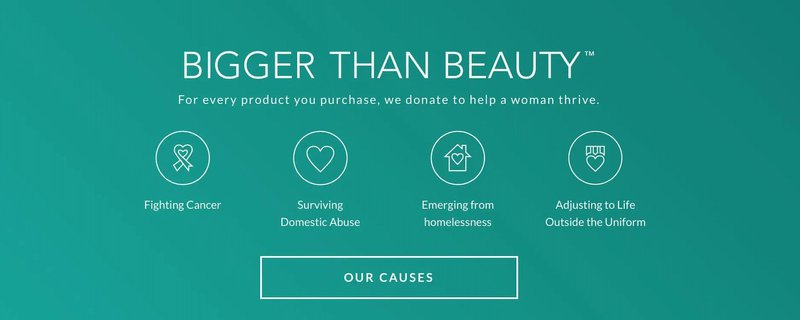
The reasons behind the social media campaign's success:
- Vital brand purpose: The campaign communicated that the brand was not just about selling beauty products but was also dedicated to positively impacting the world.
- Emotional appeal: The brand's mission to provide support for women going through cancer treatment and other difficult life situations struck a chord with many people who these issues have impacted.
- Donation model: The "Bigger Than Beauty" campaign also included a donation model, where Thrive Causemetics donated one to a woman in need for every product purchased.
11. Honey Bunches of Oats — "Happy Mother's Day"
Honey Bunches of Oats is a famous cereal brand that launched a heartwarming social media campaign called "Happy Mother's Day" to celebrate the special day and promote its products. The campaign aimed to honor mothers and show appreciation for the work they do while also highlighting the brand's values of family, love, and togetherness.
The campaign encouraged users to share their favorite mother-child moments on social media using the hashtag #HBOOMothersDayContest. Participants could enter the contest by submitting a photo or video that showed their love and gratitude for their mothers, along with a caption explaining why they deserved to win.
The reasons behind the social media campaign's success:
- Emotional appeal: The campaign focused on the emotional connection between mothers and their children, which resonated with the target audience and created a positive brand image.
- User-generated content: The campaign utilized user-generated content to engage and connect with its audience. By encouraging users to share their own stories and moments, the brand created a sense of community and fostered engagement.
- Social media reach: Social media helped the campaign increase awareness about the brand and generate buzz around it. The hashtag #HBOOMothersDayContest also helped to increase visibility and encourage participation.
- Timeliness: The campaign was launched in time for Mother's Day, which helped to create a sense of urgency and relevance for the target audience.
- Brand image: The "Happy Mother's Day" campaign reinforced Honey Bunches of Oats' brand image as a family-oriented and values-driven brand, which helped to increase brand loyalty and customer engagement.
12. Make-A-Wish — BatKid Campaign
The Make-A-Wish Foundation is a nonprofit organization granting wishes to children with critical illnesses. In 2013, the organization launched a social media campaign called "Batkid" to fulfill the wish of a young boy, Miles Scott, diagnosed with leukemia, who wanted to be a superhero for a day.
The campaign turned San Francisco into a crime-fighting Gotham City, with an elaborate setup featuring actors portraying Batman and other beloved characters. Miles, dressed in a Batman costume, was given a special mission to rescue a damsel in distress, foil a bank robbery, and capture the Riddler. The event was live-streamed and shared widely on social media, with the hashtag #SFBatkid trending on Twitter.
The reasons behind the social media campaign's success:
- Emotional appeal: The campaign appealed to people's emotions by fulfilling the wish of a young child.
- Timeliness and relevance: The campaign happened when superhero movies were popular, and the concept of a child becoming a superhero resonated with people's imaginations.
- Collaboration: The campaign involved many different organizations and individuals, including the Make-A-Wish Foundation, the San Francisco Police Department, and local businesses.
13. State Bicycle Co — 12 Days of State
State Bicycle Co is a company that designs and sells high-quality, affordable bicycles. In 2020, the company launched a social media campaign called "12 Days of State" to celebrate the holiday season and promote its products.
The campaign involved releasing a new deal or promotion every day for 12 days leading up to Christmas. Each day, State Bicycle Co announced the deal on its social media channels, including Instagram and Facebook, and encouraged its followers to take advantage of the offer.
The reasons behind the social media campaign's success:
- Unique and engaging content: The campaign featured a series of daily giveaways leading up to Christmas, with each day featuring a different prize and challenge for followers to participate in.
- Focused on the brand's values: The campaign was centered around State Bicycle Co.'s brand values of community and inclusivity, with each day's challenge highlighting a different aspect of the brand's culture.
- Collaborative approach: The campaign featured collaborations with other brands and influencers in the cycling community, helping to expand the campaign's reach and generate even more engagement and interest.
- Strong social media presence: State Bicycle Co. has a strong presence on social media channels, with a large and engaged following on platforms like Instagram and Facebook.
14. Blendtec: Will It Blend Campaign
Last but not least in our list of social media campaign examples: Blendtec. Blendtec is a company that designs and manufactures high-end blenders for commercial and residential use. In 2006, the company launched a viral marketing campaign called "Will It Blend?" to showcase the power and durability of its blenders in a fun and engaging way.
The campaign involved creating a series of videos in which Blendtec's founder, Tom Dickson, blended various unusual objects, such as iPhones, golf balls, and even a garden rake, to demonstrate the blender's capabilities.
The videos were uploaded to Blendtec's website and shared on social media channels, including YouTube and Facebook. The campaign quickly went viral, generating millions of views and shares and becoming one of the most successful viral marketing campaigns ever launched.
The reasons behind the social media campaign's success:
- Unique and creative approach: By blending unusual and unexpected objects, the campaign stood out from other marketing efforts and generated significant interest and attention.
- Viral marketing strategy: The campaign was designed to go viral, with the videos being shared across social media channels and encouraging viewers to share with their friends and family.
- Brand differentiation: The campaign helped to differentiate Blendtec from its competitors, positioning the brand as innovative and fun while also showcasing the power and durability of its products.
10 Tips to Create Successful Social Media Campaigns
Creating a winning social media campaign is not easy, but when you finally crack the code, you can engage your audience and achieve your business objectives. Alongside our social media campaign examples, here are ten tips to help you launch a winning social media campaign:
1. Define your objectives
Before you start creating your campaign, you need to define what you want to achieve. Is it to build brand awareness, generate leads, increase sales, or something else? Be specific about your objectives, and make sure they are measurable.
2. Know your target audience
To create a successful campaign, you need to understand your target audience. Who are they, what do they like, and where do they spend their time online? Use this information to tailor your message and choose the right social media platforms.
3. Tailor your message
Once you know your target audience, you need to tailor your message to their interests and preferences. Use language and design elements that resonate with them and speak to their needs and desires.
4. Build a solid distribution plan
Your distribution plan is how you get your message in front of your audience. Consider using a mix of organic and paid reach, such as social media ads, influencer marketing, and email marketing.
5. Involve influencers
Influencer marketing can be an effective way to reach a larger audience and build credibility. Identify relevant influencers on Tiktok and Instagram in your industry and partner with some of them to promote your campaign.
6. Invest in paid ads
Paid social media ads can help you reach a larger audience and generate more engagement. Consider using platforms like Facebook Ads or LinkedIn Ads to promote your campaign.
7. Get your top promoters to share
Encourage your top promoters, such as employees, customers, or partners, to share your campaign on their own social media channels. This can become a tool to amplify your message and generate more engagement.
8. Publication plan
Set up a publication plan, and decide how often and when you will publish, to ensure a consistent message. With StoryChief, a content marketing platform, you can easily create content campaigns that align with each channel’s best practices, enhance team collaboration, and easily analyze the campaign’s success.
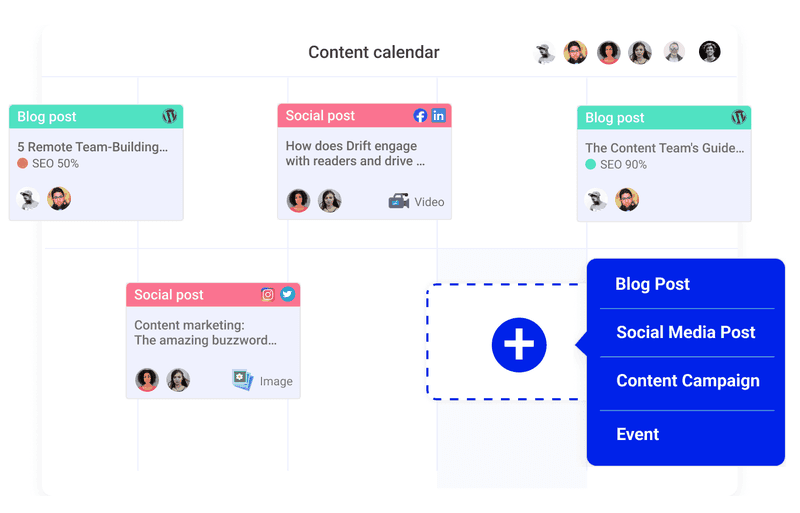
9. Establish success metrics
Set clear and measurable success metrics for your campaign. This could include engagement rates, website traffic, lead generation, or sales. Use these metrics to evaluate the effectiveness of your campaign and make adjustments as needed.
10. Analyze and adjust
After your campaign is over, monitor the social media analytics and adjust your strategy for future campaigns. Learn from what worked and what didn't, and use that knowledge and acquired skills to improve your social media marketing efforts going forward.
Wrapping up
The success of marketing campaigns is determined by various factors, including a compelling message, emotional appeal, user-generated content, influencer marketing, multi-channel marketing, and brand identity.
Successful marketing campaigns require a well-defined target audience, a clear message, and a creative approach to reach and engage that audience. By leveraging these strategies, brands can create meaningful and memorable campaigns that build brand awareness, loyalty, and customer engagement.
by
Tags: